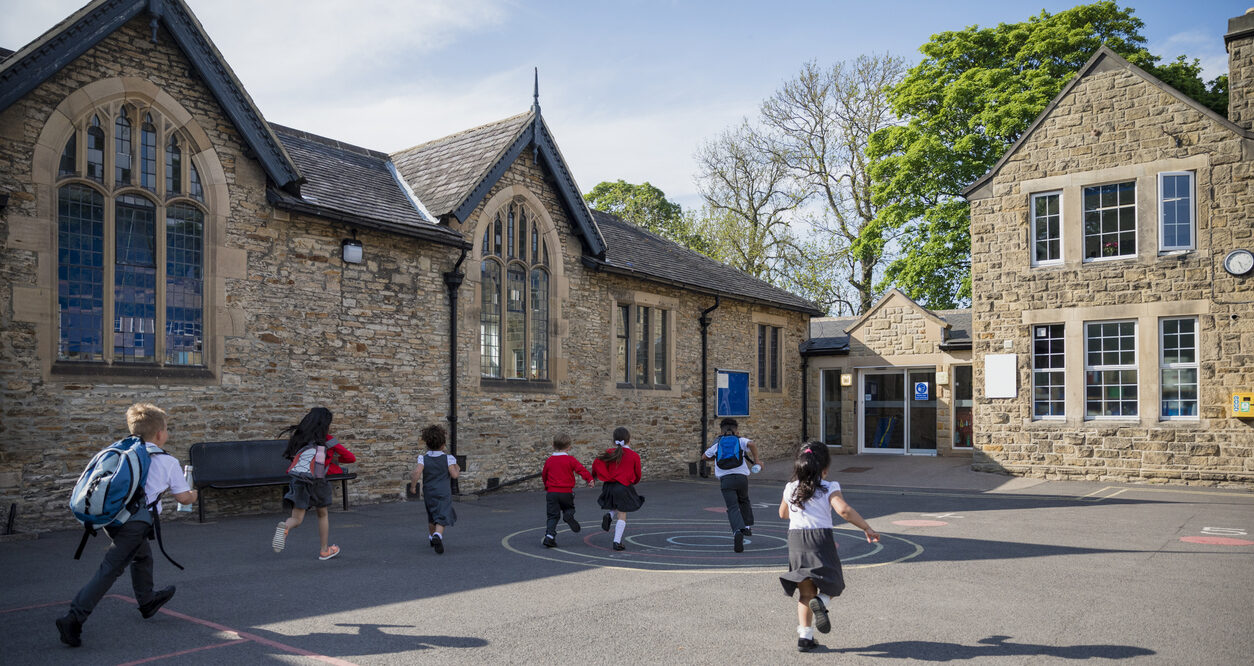Top down education is crumbling

For decades, think tanks, policy analysts, and educators have advanced the cause of school choice. In 2022 and 2023, states passed expansive school-related legislation. As of this writing, six states have enacted universal school choice plans for their K–12 students. (Editor’s note: Oklahoma and Ohio have been recently added to that list.) Florida passed HB 1, which “expands Florida’s Family Empowerment Scholarship to universal eligibility. All of the Sunshine State’s 2.8 million K–12 students will be eligible for education savings accounts (ESA).” Similar laws now exist in Nebraska, Oklahoma, and South Carolina. Texas may enact expansive reforms in a 2023 special legislative session.
Arkansas, in passing the Arkansas LEARNS Act, established ESAs for K–12 students and increased teacher base salaries by $14,000. Arizona, which had one of the oldest ESA plans in the nation, expanded that plan to apply to all students. HB 2543 “made all students eligible for Arizona’s Empowerment Scholarship Account (ESA) program, which gives parents up to $6,400 back in tax money to spend on educational costs at a school of their choosing. This is a drastic change, as before, Arizona ESAs were only reserved for some poor, disabled, and Native American students.” Iowa and Utah now have similar plans that will eventually apply to all K–12 students in those states.
As school choice advocate Corey DeAngelis tweets with each state that passes such a bill, “It’s happening!” But why now? And why, so far, in red states? What is it about Republican state leadership that inclines legislators and governors to change the educational status quo? In one sense, there is an obvious partisan element: Republicans are less inclined to support teachers unions, though such positions vary by time and place. Perhaps a more substantive reason can be found in the application of federalism to the question of education policy.
The US Constitution affirms a clear division of power: Congress governs specific tasks, such as the national defense, interstate commerce, and the “general welfare.” Amendment Ten could not be clearer: “The powers not delegated to the United States by the Constitution, nor prohibited by it to the States, are reserved to the States respectively, or to the people.” Over the past century in public education, a de facto uniformity has emerged through the standardization of education programs, national teachers unions, and licensure requirements for educators. States have minor variations, but as an industry, public education functions like a monopoly. School choice introduces competition to state revenue allocation.
Thanks to school choice, American education can move from a national, monopolistic model to a more federalist-minded framework.
Parents want options for their children, and school choice movements seek to give them those options. The current successes in school choice build on the decades-long charter school movement. The success of individual charters (like Franklin Academy in Wake Forest, North Carolina) and charter networks (like BASIS, Ascent, and the Hillsdale K–12 schools) provide ample evidence that schools do not all have to look the same. Thanks to school choice, American education can move from a national, monopolistic model to a more federalist-minded framework.
Intellectual conservatism began with Edmund Burke and his magisterial “Reflections on the Recent Revolutions in France.” In the 250-plus page letter, Burke articulated a sense of loss that conservatism found fruitful for over two centuries. Burke countered Enlightenment-style rationalism, suggesting that there is something precious in local communities and a way of life that has developed organically over centuries. This preference for locality and organic habits of living were threatened by the Enlightenment philosophes’ insistence on pure reason, national standardization, and the overthrow of traditions. Two of Burke’s concepts shed light on the school choice movement: the “little platoons,” and the “moral imagination.”

Burke argued that small communities, like clubs, teams, or classes in a school, help people form networks of friendship. Here is how he put it: “To be attached to the subdivision, to love the little platoon we belong to in society, is the first principle (the germ as it were) of public affections. It is the first link in the series by which we proceed towards love for our country and mankind.”
The school community—one such little platoon—plays a significant role in helping students love their neighborhood, their town, and their state. The school community teaches students to understand authority and how to relate to the whole of society through habitual training. There students learn respect beyond the family, and to mingle with others who are unlike them in significant ways. In the school, teachers get to know and cherish students for their particularities and see them grow into excellent human beings. They may go on to do great things, but they begin their entrance into the larger world via the school. Such a community is inherently local; it is a temporary gathering of students, teachers, administrators, and parents working together for the formation of children.
Education is never value-neutral but is instead seeking to form students toward an ideal. Burke believed that education cultivates what he called the “moral imagination,” a sense of what could be and what is important about the world. This faculty can be cultivated and shaped, and it provides the ground from which the individual makes choices throughout life. This “moral imagination” is not one of the necessities for brute survival, but it is the capacity to recognize the goodness of civilization and one’s place in it. Observing the chaos of the French Revolution, Burke saw a stripping away of the moral imagination, which enabled one person to look at another and see not a “meat bag” but a fellow human being of worth.
But now all is to be changed. All the pleasing illusions, which made power gentle, and obedience liberal, which harmonized the different shades of life, and which, by a bland assimilation, incorporated into politics the sentiments which beautify and soften private society, are to be dissolved by this new conquering empire of light and reason. All the decent drapery of life is to be rudely torn off. All the superadded ideas, furnished from the wardrobe of a moral imagination, which the heart owns, and the understanding ratifies, as necessary to cover the defects of our naked shivering nature, and to raise it to dignity in our own estimation, are to be exploded as a ridiculous, absurd, and antiquated fashion.
Schools are the place where children learn the “superadded ideas,” the concepts that do not contribute to survival but help students prepare for a life of freedom within a republic. There is always a “moral imagination” governing the education of children. As Christopher Rufo has shown, in the majority of public education, moral imagination embraces some form of progressive, revolutionary ideology. Florida’s Parental Rights in Education Bill was an attempt to limit the ability of mainstream public educators to bring students into that progressive ideology at very young ages.
The argument for school choice is not that it demolishes a bad moral imagination, but rather that it allows for a multitude of educational visions to try their approach in the educational marketplace. Mainstream public education has a singular vision, and while state dollars go only to that approach, the investment payoff for educational entrepreneurs is difficult to imagine. Both Loudoun County in Virginia and Dearborn, Michigan, made national headlines in recent years for contentious school board meetings. School board leaders were wildly out of alignment with parents in their districts. School choice provides parents with options, and it shows educational entrepreneurs that if they have a viable school, the funds to cover salaries, building costs, and curriculum will emerge.
The vision of federalism originally resisted sameness because of diverging interests; Virginia’s interests were different from Georgia, and more different still from Vermont. Each state should, under the Constitution, be given the ability to pursue its own interests. School choice applies the same logic to education. All property-owning citizens create the tax base that funds public education, but the needs of students and communities are far from identical. Let woke progressives teach the 1619 Project as their core American history program—and see how the results go over a decade. But, if parents hate their children being indoctrinated to despise their country and historical heritage, let another school follow Wilfrid McClay’s “Land of Hope” approach. If parents want an irreligious school, that’s fine. But for parents who want a school that teaches human dignity grounded in the Imago Dei, tax dollars should be able to fund that vision as well.
In 2017, educational scholar Ashley Rogers Berner published “Pluralism and American Public Education: No One Way to School.” Berner compared the uniform American public education system to Scandinavian countries’ commitment to funding different schooling models. Her book is interesting but ultimately unsatisfactory, because a Scandinavian model cannot map onto a country with as much geographic, ethnic, and ideological diversity as the United States. Instead of choosing which systems to fund, the school choice mantra of “fund students, not systems” places the responsibility for choosing a school on parents. That responsibility allows parents to vote with their feet. If the administration is terrible, if the teachers fail to teach, and if bullying cannot be solved, parents will go where their children are better served. Such an approach recalls Justice Brandeis’ phrase “laboratories of democracy” to describe a myriad of policies in various states. Instead of an educational monopoly, tax dollars could create an educational marketplace.

What would such a future look like? In one sense, that future is already unfolding. Great Hearts Academy has over 20 campuses in four states, and in 2023–2024 they are launching Great Hearts Christos, a private Christian version of their school model. Thales Academy has figured out how to offer private, classical education at approximately $6,000 annually per student. Optima Academy Online is pioneering a virtual reality classical model for students who have no good schooling options near them. Hillsdale College’s K–12 American Classical Education program has helped over 25 charter schools gain their charter while supporting their communities with top-notch curriculum. With Arizona, Utah, Iowa, Florida, Arkansas, West Virginia, Oklahoma, and Ohio now opening the floodgates of state funds attached to students, the coming years will see a variety of educational experiments. Some will fail, but others will succeed. Such marketplace competition will apply new pressures to public education, forcing schools to either improve in ways that parents agree with or lose enrollment. Competition will bring out the best in education, while forcing inferior schools to close as funding dries up.
The federalist vision is one of freedom and opportunity. The educational monopoly of public education is crumbling. And that’s a good thing. By funding students, rather than systems, state policymakers can apply the principles of federalism to help local communities seek their interests. An educational marketplace allows parents to shape the moral imaginations of their children within educational “platoons” that help them learn the habits, responsibilities, and rights of citizenship.
Josh Herring is professor of Classical Education at Thales College in Wake Forest, North Carolina.



